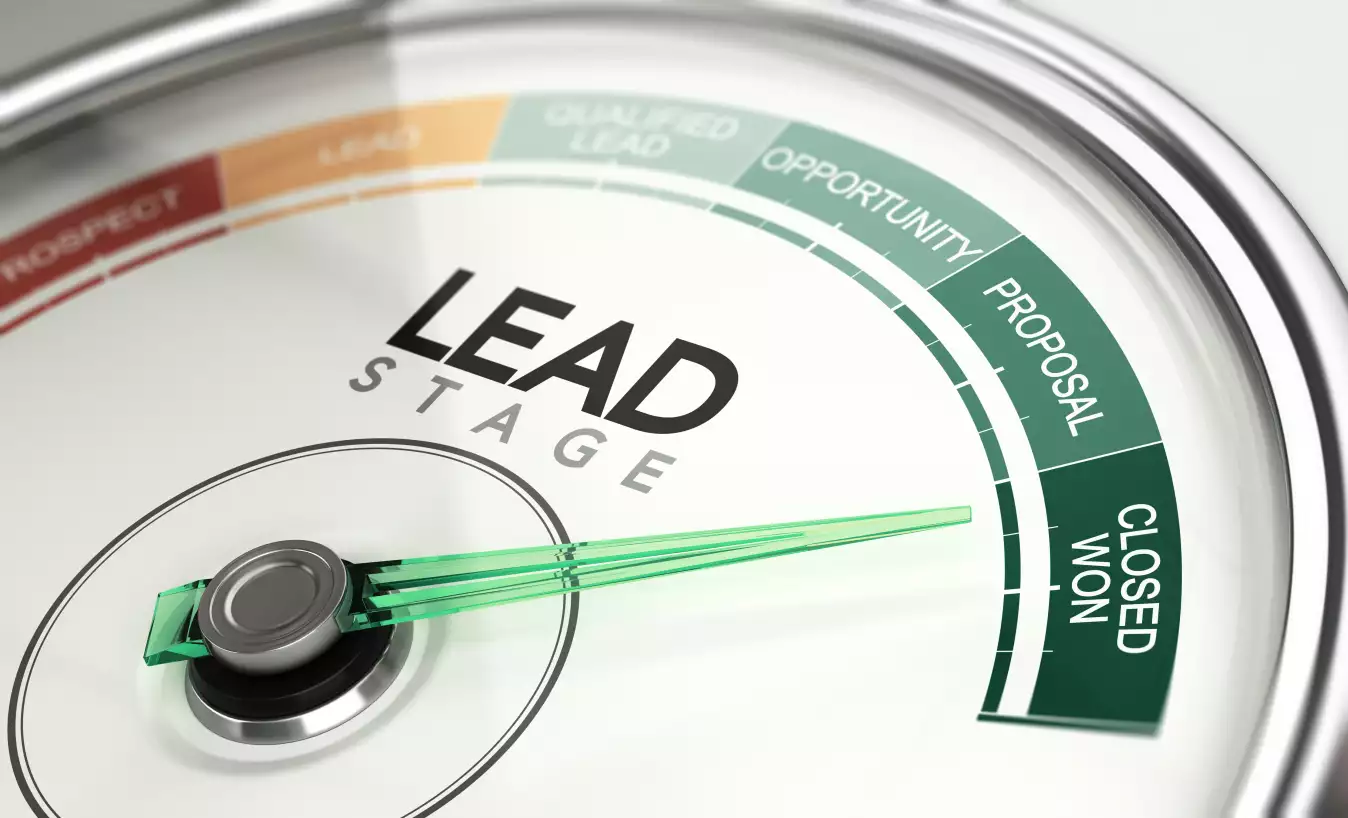When you think about your SaaS sales pipeline, what pops into your head? Maybe you see it as a series of steps or a useful roadmap. Either way, you’re absolutely right! It’s guiding your prospects from that first spark of interest to becoming your most loyal customers.
So, what does it really take to build an efficient SaaS sales pipeline? In this blog post, I’m excited to share everything you need to know.
I’ll walk you through the plans and tools that can help you and your team shine at every stage of this journey.
Are you ready to discover the secrets to creating a thriving SaaS sales pipeline? Let’s jump right in!

Let’s chat about the SaaS sales pipeline. Having a solid sales pipeline is important if you want to turn potential leads into paying customers. Think of it as a journey where each customer moves through specific stages that help guide the process.
First up is prospecting. This is where you find leads that fit your perfect customer profile. It’s like the foundation of your pipeline, and trust me, a strong foundation makes all the difference.
Next, we have the qualification stage. Here, you figure out if a lead is a good match for what you’re offering. You’ll want to look at things like their financial plan and specific needs. This step is all about focusing on prospects who are more likely to convert, which saves you time and effort.
Once you’ve qualified your leads, it’s crucial to understand their challenges. You can do this through a needs assessment. By getting to know what they really need, you can customize your solution to fit them perfectly.
Then comes the presentation and demo stage. This is your chance to shine! Creating an interesting presentation is key to showing how your SaaS solution can tackle the prospect’s challenges. A well-executed demo can really spark interest and help move the prospect along.
As you build that engagement, it’s time to have a personalized proposal. This should lay out the conditions, costs, and the value of your SaaS offering. It’s also the stage where discussions often happen, so be ready to address any concerns they might have.
Now, let’s discuss closing the deal. This is a critical phase during which you need to reassure the prospect and clear up any lingering doubts. You want them to feel confident about their decision to move forward.
Finally, we arrive at the onboarding and customer success stage. This step is all about making sure the transition from sales to execution goes smoothly. It sets a favorable tone for the customer experience and opens the door for long-term contentment and potential upsells. So, let’s keep that momentum going!
When it comes to a successful SaaS sales pipeline, it’s not just ticking boxes as you move through the stages. It’s truly excelling at each phase, grabbing opportunities, and delivering genuine value. Let’s dive into how you can fine-tune each stage for a smoother experience for both you and your prospects.
In the prospecting stage, I recommend getting yourself deep into market research and data analytics. This is your chance to pinpoint potential leads that fit your target audience perfectly. Using tools that help you identify companies or individuals who would really benefit from your SaaS solution is crucial. Plus, don’t forget about Account-Based Marketing (ABM) to tailor your outreach to high-value accounts. Remember, personalized engagement is everything. Show that you genuinely care about meeting their unique needs.
Moving on to the qualification phase, I find the MEDDIC Criteria to be super helpful. This method allows you to assess a lead's potential and their organization’s readiness for your solution. Use lead scoring based on fit, engagement, and behavior, so you can prioritize leads effectively. This way, you can channel your energy into prospects who are more likely to convert.
Now, in the needs analysis stage, you must sharpen your listening skills to uncover those hidden pain points. Ask open-ended questions that encourage prospects to spill the beans about their needs. Position your SaaS solution as the perfect answer to their challenges, and make sure to highlight how it specifically tackles their issues while delivering solid benefits.
When you hit the presentation and demo phase, tailor your demo to spotlight how you solve the challenges you’ve identified earlier. Use real-world scenarios to show off the practical value of your product. This makes truly it relatable and engaging.
As you enter the proposal and negotiation stage, craft a proposal that aligns with the prospect's needs and budget. Offering flexible pricing and bundling features can really make a difference. Be proactive in anticipating objections and addressing them in your proposal. Always be ready to ease any concerns they might have.
To close the deal, set a commitment timeline for the prospect. Highlight time-sensitive benefits to create a sense of urgency. Address any last-minute concerns and provide additional resources to boost their confidence in making the decision.
Finally, in the onboarding and customer success stage, keep the lines of communication open post-sale and actively collect feedback. Consider offering training resources to help them hit the ground running.
Apply these strategies across all stages of your SaaS sales pipeline, and you’ll engage prospects more effectively and deliver real value. This approach will guide them toward becoming satisfied, long-term customers.
Using the right tools and technologies makes everything smoother, boosts efficiency, and creates amazing experiences for your customers.
At the heart of a successful SaaS sales pipeline is a solid Customer Relationship Management (CRM) system. Think of it as your command center for managing customer interactions and keeping track of leads. It makes capturing, organizing, and monitoring leads as they move through the pipeline a breeze.
A CRM also helps you build detailed profiles of your leads. You can create reports to analyze how your pipeline is performing. These reports are super helpful for spotting areas that could use a little TLC attention.
Now, let’s chat about sales automation and outreach tools. These handy tools can really boost your team's productivity by taking care of those repetitive tasks. They ensure you never miss a follow-up and let you automate personalized email sequences. You can set up automated tasks and create custom workflows that guide leads through each stage effortlessly.
Next up are analytics and reporting platforms. These tools are key for fine-tuning your SaaS sales pipeline strategies. They help you spot trends, identify bottlenecks, and make decisions based on solid data. With visual representations, you get a clear snapshot of leads, opportunities, and revenue.
Don’t overlook communication and collaboration tools, either. They make meetings, presentations, and real-time collaboration with prospects a whole lot easier. These tools help your sales team communicate efficiently and stay on the same page.
And let’s not forget about AI-powered sales tools. They open up exciting opportunities like predictive insights, automation, and personalized recommendations. These tools analyze data to score leads effectively. You can even use AI chatbots to engage with visitors on your website. Plus, they provide forecasts that can really sharpen your strategic decision-making.
If you want to get the most out of your SaaS sales pipeline, it’s all about measuring, analyzing, and refining things on a regular basis. Trust me, embracing this cycle is crucial for long-term success.
First off, let’s talk about Key Performance Indicators (KPIs). You’ll want to define and keep an eye on these for every stage of your sales pipeline. For instance, focus on metrics like how many leads you’re generating during the prospecting phase. Don’t forget to check out your conversion rates, especially from qualification to presentation. And hey, take a good look at how well your needs analysis process is working. Analyze these metrics regularly, and you’ll start to notice patterns and trends that can point out where you need to make improvements.
Another handy tool is segmentation analysis. This helps you figure out which market segments are converting the best. Plus, win-loss analysis can give you insights into why some deals go through while others don’t. This kind of digging into the data lets you make smart adjustments to your sales pipeline.
You might find that tweaking the MEDDIC criteria based on your findings is necessary. Maybe it’s time to adjust your lead scoring models or refine your messaging to better connect with your prospects' pain points. And let’s not overlook the importance of developing solid strategies for handling objections.
Lastly, don’t underestimate the power of customer feedback. Listening to what your customers have to say can be a treasure trove of insights for making improvements. By tuning in to their needs, you can ensure a smoother experience and foster long-term satisfaction.
Building a solid sales pipeline is essential for your SaaS success. Each step is crucial in guiding leads from curiosity to commitment.
Creating an effective sales pipeline isn’t a one-and-done deal. It takes continuous adjustments, learning, and dedication at every stage.
So, let’s dive into refining your sales pipeline. Keep measuring, tweaking, and innovating as you go. Your ongoing commitment will push your SaaS business forward and strengthen your bond with customers. Remember, this journey is made up of many small yet significant steps. It’s a path that can lead to a thriving and sustainable SaaS enterprise.

 Csilla Fehér
Csilla Fehér